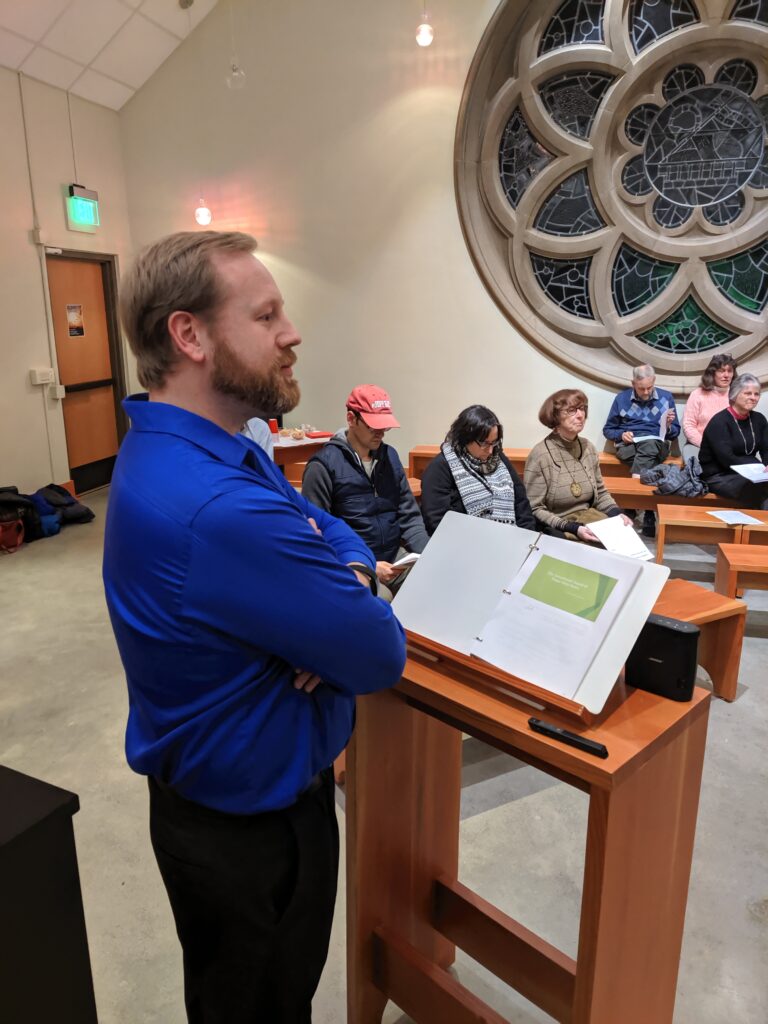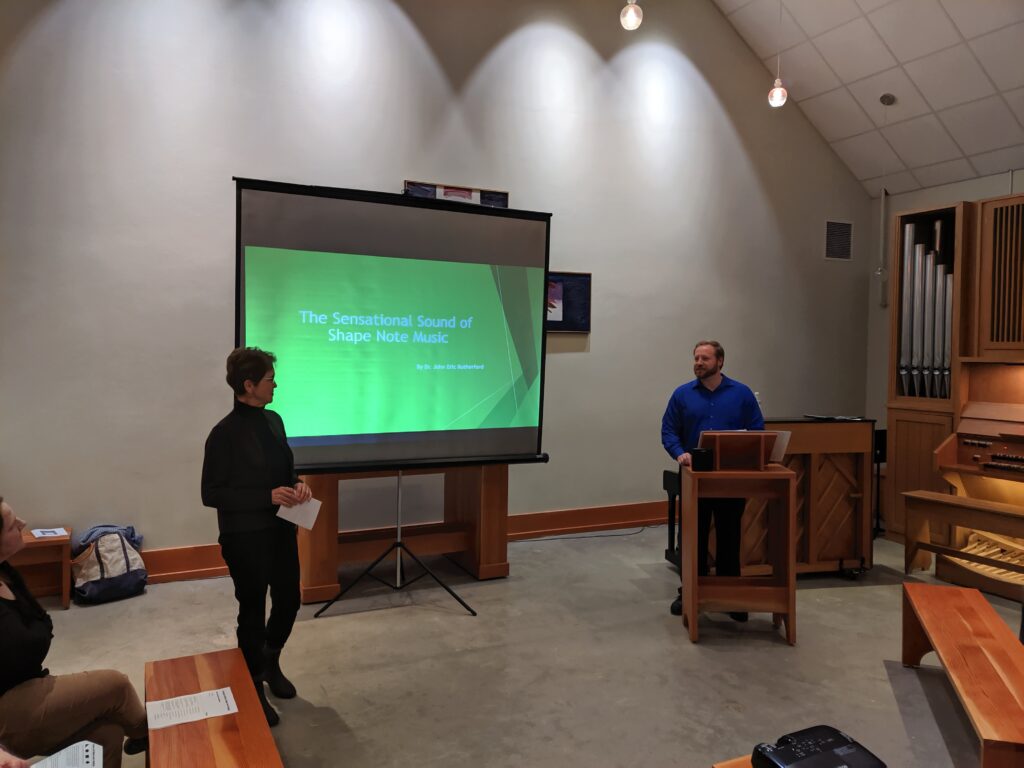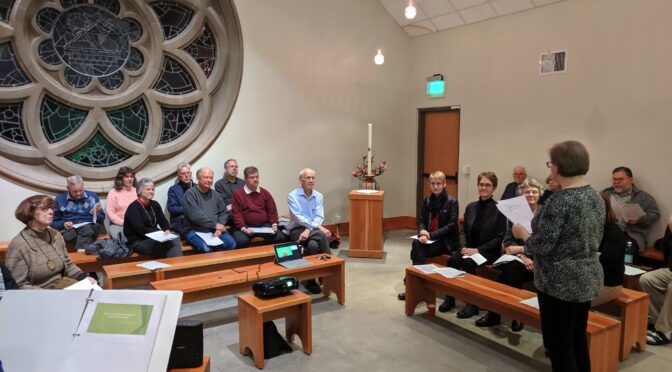Eric Rutherford is from West Virginia, and grew up with shape-note singing in his native Appalachia. He also added academic credentials to his expertise, recently completing a DMA at the University of Washington with a dissertation focused on bringing shape note singing into the choral classroom.

Eric shared this expertise with the Tacoma Chapter of the American Guild of Organists at the February meeting, with a talk on the history and practice of shape note singing followed by audience participation. Tacoma AGO member Nancy Ferree-Clark introduced him, having worked with him at Federal Way United Methodist Church.

The shape note tradition is alive and well, with numerous local gatherings and all-day singings, including the Pacific Northwest. The point of singing this music is exactly that–singing. The music is for the performer and not for the audience. Nobody is worried about how they sound–they’re just enjoying the singing.
There are characteristics that are common in the shape note style:
- Dispersed harmony, favoring 4ths and 5ths
- Doubling of parts; bass is usually male voices, but the other 3 parts are doubled with men and women
- Shaped notes and fasola syllables
- Dynamic and rhythmic intensity – “forte is good, fortissimo is better”
- Unaccompanied
Brief History of Music in the Early Colonies
- The original European settlers carried their music traditions across the ocean. Psalm singing tradition in the Puritan faith included lining out the melody, but the traditional tunes had become corrupted with time. There was no time in the constant struggle to survive for formal music education, so most people were musically illiterate.
- Singing schools began to arise in New England, mostly manifested by travelling self-educated music teachers in the American entrepreneurial spirit.
- Many of the well known early American composers were also singing school teachers, including William Billings and Lowell Mason. Much of their music is preserved in the Sacred harp Hymnal and others from the time.
- Singing school teachers needed to improve musical literacy quickly, and shaped note heads was not new, but proved to be a good way to improve sight reading.
- The generally accepted shaped note method was developed by John Connelly in the 1790s, but Smith and Little beat him to the publisher with a teaching manual called The Easy Instructor
- There were numerous shape systems, but the most common was based on fa sol la fa sol la mi fa rather than do re mi.
The Sacred Harp was one of about 37 tune books published between 1789 – 1855, but it was the most popular. There are four types of music in Sacred Harp:
- Folk hymns
- Fuging tunes
- Anthems (usually much longer)
- Original Compositions
Shape note performance practice:
- Vocal style is often cutting, clear, and piercing, with the nasal passage used as the primary resonator.
- Singing formation is often the “hollow square” with 4 groups facing each other, not necessarily grouped by gender.
- The melody, in general, is in the tenor.
- Leadership is egalitarian, and all are welcome to participate.
- The conductor can be anyone in the group.
The tradition is still strong. New literature is being written, but local groups are honoring the traditions that are centuries old.
The program was very well received by the audience, with strong participation. Tacoma AGO board member Satya Jaech commented: “Even though I’d heard shape note singing before, I knew little about it. Eric’s presentation was clear and organized, and it included just enough information to assimilate in the time allotted. It was also interesting to sing some of the shape note hymns/songs, although I can’t imagine having the voice to sing these pieces for 6 hours straight!”
The two handouts from the meeting are reproduced below:
20200217-Grayson_Beginners_Guide_2012 2020217-music-handout
